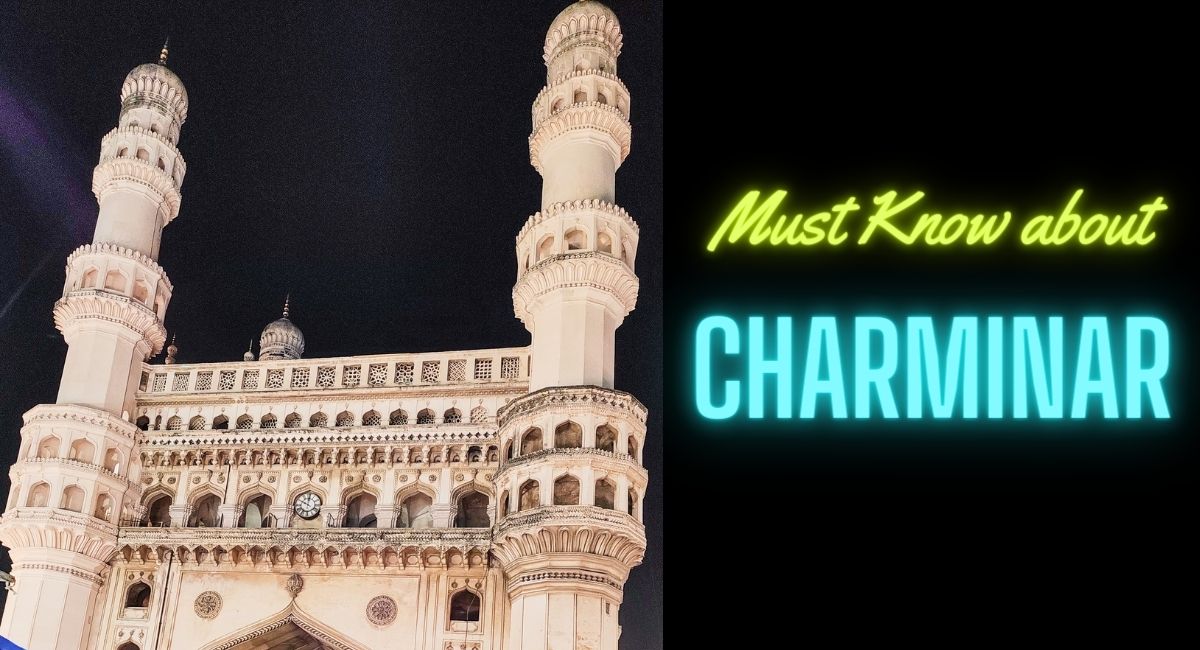Charminar, an awe-inspiring monument, commands attention with its imposing presence and intricate design, etching itself indelibly into the annals of Indian heritage.
Table of Contents
Introduction
Nestled in the heart of Hyderabad, India, stands an iconic monument that embodies the city’s rich history, culture, and architectural grandeur.
Charminar, often referred to as the “Arc de Triomphe of the East,” is a mesmerizing masterpiece that has captured the imaginations of visitors for centuries.
In this blog, we will embark on a journey through time and explore the fascinating history, architectural marvel, cultural significance, and enduring allure of Charminar.

Historical Origins
Charminar, meaning “Four Towers” or “Mosque of the Four Minarets,” was constructed in 1591 by Sultan Muhammad Quli Qutb Shah, the founder of Hyderabad.
This stunning monument was built to commemorate the end of a devastating plague that had plagued the city.
The Sultan vowed to construct a grand mosque if the epidemic subsided, and Charminar emerged as a symbol of his gratitude to the Almighty.
Architectural Marvel
The architectural splendor of Charminar is a testament to the skill and craftsmanship of its builders. This impressive structure is a square edifice with each side measuring 20 meters, adorned with four towering minarets, each reaching a height of 48.7 meters.
These minarets serve both functional and aesthetic purposes. While they add to the grandeur of the monument, they also facilitate the call to prayer (Adhan) for the faithful.
The central structure, the Charminar itself, is a magnificent square building with four grand arches facing each cardinal direction.
The arches are intricately adorned with ornate stucco work, floral motifs, and delicate patterns, showcasing the Indo-Islamic architectural style that was prevalent during that era.
The monument is constructed primarily with granite and lime mortar, ensuring its durability and resilience through the centuries.
Cultural Significance
Charminar stands as a symbol of Hyderabad’s vibrant cultural heritage. It is not merely a historical monument but also a thriving hub of life, culture, and commerce.
The bustling markets surrounding Charminar are renowned for their vibrant bazaars, where one can find everything from traditional textiles, jewelry, perfumes, and authentic Hyderabadi cuisine.
The Charminar also holds religious significance as it houses a mosque on its second floor, which is still used for daily prayers.
The serenity of the mosque’s interior provides a tranquil escape from the bustling streets below, offering a spiritual refuge for the faithful.
The Charm of Charminar
One of the most enchanting aspects of Charminar is its ability to mesmerize visitors from all walks of life.
At sunrise and sunset, the monument bathes in a golden hue, creating a breathtaking spectacle that leaves onlookers in awe.
As night descends, the monument is bathed in radiant lights, making it a truly captivating sight. Charminar’s beauty transcends time, continually drawing admirers who come to marvel at its magnificence.
The Vibrant Surroundings
Exploring Charminar is not limited to admiring its architectural beauty alone. The surrounding area, known as the Charminar locality, offers a vibrant and eclectic mix of experiences.
One can meander through the narrow, bustling lanes, where shops brim with colorful bangles, dazzling fabrics, and fragrant spices.
The famous Laad Bazaar, in particular, is a treasure trove of traditional Hyderabadi jewelry, featuring exquisite designs and intricate craftsmanship.
Additionally, food enthusiasts can indulge in the delectable Hyderabadi cuisine available at various street food stalls and restaurants nearby.
The Hyderabadi biryani, haleem, kebabs, and sweets like double ka meetha are just a few culinary delights awaiting eager taste buds.
Festivals and Celebrations
Charminar plays a central role in many of Hyderabad’s festivals and celebrations. During Ramadan, the area around Charminar comes alive with an array of food stalls and festive decorations.
The monument is beautifully illuminated, creating a magical atmosphere as people gather to break their fasts and celebrate the holy month.
The annual Bonalu festival, celebrated predominantly by the women of Hyderabad, sees Charminar adorned with colorful rangoli and flowers.
Pilgrims from across the city flock to the monument to offer their prayers and participate in the festivities.
Preservation and Restoration
Over the centuries, Charminar has faced its share of natural disasters and the wear and tear of time. However, it has been meticulously restored and preserved by various governments and heritage organizations.
These efforts ensure that this architectural gem remains a symbol of Hyderabad’s rich heritage for generations to come.
Also, read the Telangana govt blog on Charminar
Conclusion
Charminar, with its historical significance, architectural grandeur, cultural vibrancy, and enduring charm, stands as a testament to the glorious past and vibrant present of Hyderabad. It is more than just a monument; it is a living, breathing icon that continues to capture the hearts and imaginations of all who visit. As you explore the bustling streets and rich history surrounding Charminar, you can’t help but be drawn into the magical world of this jewel in Hyderabad’s crown. It is a place where the past and present seamlessly coexist, a place where tradition and modernity meet, and a place where the spirit of Hyderabad comes alive. Charminar truly is the heart and soul of this remarkable city, and its allure is bound to endure for centuries to come.
